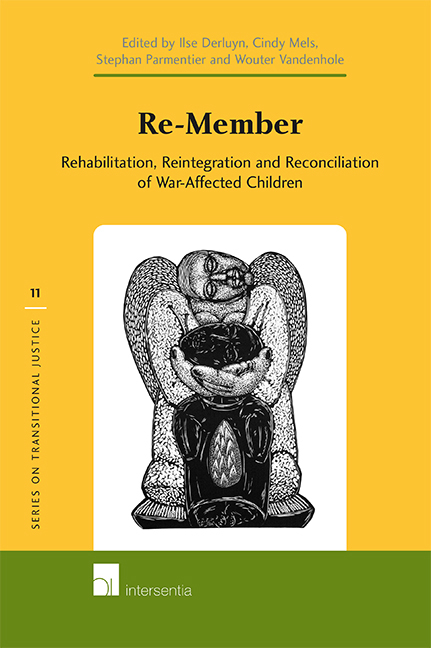Book contents
- Frontmatter
- Preface
- Foreword
- Contents
- Introduction: Children Affected by Armed Conflict at the Intersection of Three Fields of Study
- PART I SETTING THE SCENE: THREE DISCIPLINARY PERSPECTIVES
- PART II LESSONS LEARNT FROM CURRENT PRACTICES AND APPROACHES
- PART III EXPLORING RESOURCES THROUGH EMPIRICAL RESEARCH
- PART IV LOOKING BACK, REACHING FORWARD
- About the Editors
- About the Authors
17 - Psychosocial Adjustment and Mental Health Services in Post-Conflict Sierra Leone: Experiences of CAAFAG and War-Affected Youth, Families and Service Providers
Published online by Cambridge University Press: 20 January 2021
- Frontmatter
- Preface
- Foreword
- Contents
- Introduction: Children Affected by Armed Conflict at the Intersection of Three Fields of Study
- PART I SETTING THE SCENE: THREE DISCIPLINARY PERSPECTIVES
- PART II LESSONS LEARNT FROM CURRENT PRACTICES AND APPROACHES
- PART III EXPLORING RESOURCES THROUGH EMPIRICAL RESEARCH
- PART IV LOOKING BACK, REACHING FORWARD
- About the Editors
- About the Authors
Summary
INTRODUCTION
From 1991 to 2002, Sierra Leone endured a brutal civil war which left approximately 50,000 people dead, 20,000 brutally mutilated and three quarters of the country's population displaced. The marginalisation and political exclusion of youth were considered to be two major contributing factors to the war. Many young people were forcibly abducted by the Revolutionary United Front (RUF), the rebel group central to the conflict, whereas others joined willingly. Youth were also involved in the ranks of the civilian defence forces and factions of the Sierra Leone army. Although official estimates indicate that some 5,000 to 10,000 children were involved in the different warring factions, other sources report estimates as high as 48,000.This range in estimates is due in part to difficulties in tracking children involved in combat given the continual displacement of persons, lack of infrastructure, and the fact that combat groups kept no records. The National Committee for Disarmament, Demobilization and Reintegration (NCDDR) estimates that nearly 7,000 children were formally demobilised. At the conclusion of the war, many youth and child combatants underwent a formal disarmament, demobilisation and reintegration (DDR) process, where various international and local non-governmental organisations (NGOs) provided psychosocial services including family reunification, counselling, education and job skills training. Many other youth and child combatants self-reintegrated without formal services, and are therefore not captured by DDR statistics.
Today, years after the war's conclusion, many of the issues which spurred the conflict in Sierra Leone remain unaddressed or unresolved. The country ranks at the bottom of the Human Development Index with up to 70 percent of youth classified as underemployed or unemployed. Evidence has suggested that waraffected children and youth are at increased risk of mental health problems, including depression, post-traumatic stress disorder, anxiety and aggression.
- Type
- Chapter
- Information
- Re-MemberRehabilitation, Reintegration and Reconciliation of War-Affected Children, pp. 403 - 436Publisher: IntersentiaPrint publication year: 2012
- 3
- Cited by

